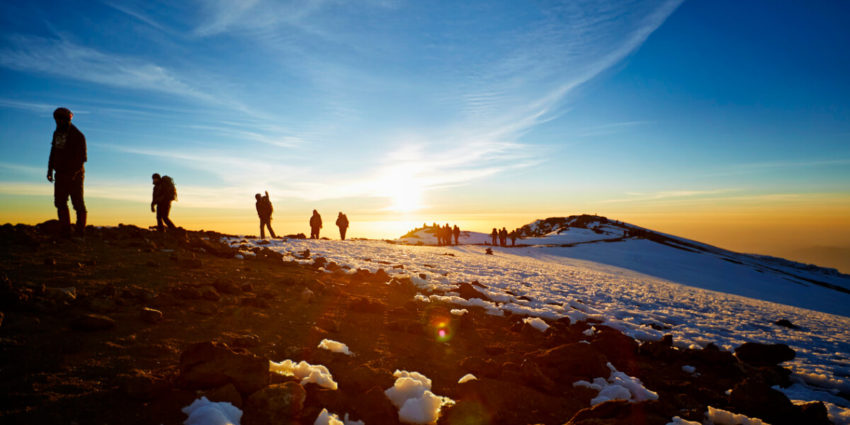Acclimatization: Tips for Climbing Kilimanjaro

Mount Kilimanjaro, a 20,000ft (5,900m) dormant volcano situated in Tanzania has attracted climbers to its summit since the first recorded ascent in 1889. This famous mountain towers over the African continent as its highest peak and holds the title for being the highest free-standing mountain on earth.
With thousands of hikers descending upon Tanzania each year to conquer this simply awesome feat, many relish the challenge ahead. There are several Kilimanjaro trekking routes, each with its own unique qualities. However, there are necessary preparation steps and helpful tips that will help you reach Kilimanjaro’s summit, allowing you to stand higher than anyone else on this enormous continent. Let’s dive in.
CLIMBING KILIMANJARO DIFFICULTY
Mt. Kilimanjaro is truly one of the great trekking experiences on earth. It’s important to note that it’s not a technical climb and no special mountain climbing experience is needed. In fact, out of all the Seven Summits (the highest mountains on each of the seven continents on earth), Kilimanjaro is the only one that is said to be truly “walkable”. Several factors make Kilimanjaro a tough but achievable climb and solid preparation is vital. Without further ado, let’s talk about acclimatization.
KILIMANJARO ACCLIMATIZATION
High altitude acclimatization is the process of becoming accustomed to the new climate at a high altitude. Altitude sickness is caused as a result of a rapid change in air pressure and oxygen levels. If you climb to a high elevation without giving your body time to adjust to the new conditions, your body may react as less oxygen is circulating the body and you may end up with acute mountain sickness.
As you reach the summit of Kilimanjaro, you’ll have around half of the amount of oxygen per breath as you would have at sea level. Even the most physically fit of us may experience altitude sickness and it’s well documented that there are no specific factors such as sex, age, or physical condition that affect acclimatization.
However, do not let that put you off! On our Kilimanjaro climbs, we are extremely meticulous and plan carefully for acclimatization. We deliberately add acclimatization days onto our climbs to give each and every climber the best opportunity to let their bodies adjust and ultimately reach the summit.
FAILURE TO PREPARE IS PREPARING TO FAIL
The days leading up to the summit ascent aren’t overly difficult but the summit push can be challenging. It’s a midnight start with an ascent over 1500m and a descent of nearly 3000m, totaling 16-18 hours. It is obtainable, but before you join us on your Kilimanjaro adventure, there are things you can do to physically prepare for the challenge ahead.
After locking in your Kilimanjaro climb, we would recommend starting with 2 long hikes per week, gradually increasing it to nearly daily as you approach your climb date. This endurance training will result in gradual leg strength and help increase muscle memory before you take on Africa’s tallest peak. As your training progresses, continue to add more and more items into your backpack too, so when you do come to climb Kilimanjaro with the aid of the porters, you’re as prepared as possible.
TIPS
Gradual pace: On our climbs, we insist that everyone in the group walks at a gradual, steady pace. It is arguably one of the most important factors in preventing acute mountain sickness. On our treks, you will hear our expert local guides advise everyone to take it “pole pole”, which means easy-going in Swahili. Going “pole pole” may seem frustratingly slow for those very eager to reach the top, but rest assured, it is the best way to make it to the summit in good health.
Climb high, sleep low: A mountaineer’s philosophy. We’ve tailored our tours to ensure, where possible, that we climb the mountain during the day, exposing ourselves to higher altitudes, forcing our bodies to adjust, then returning to lower ground to sleep and recuperate.
Acclimatization days: We deliberately add these days to allow for your bodies to adjust. On our 9 Day Northern Circuit Route, for example, we’ll spend a day at 13,000ft (4,000m) as it’s perfect for acclimatization, contributing to higher summit success rates.
In our experience, these 3 tips work wonders. However, if you want more professional advice, tips, or even just chat to our friendly team about coming on one of our climbs, contact us today and embark on an adventure of a lifetime.





